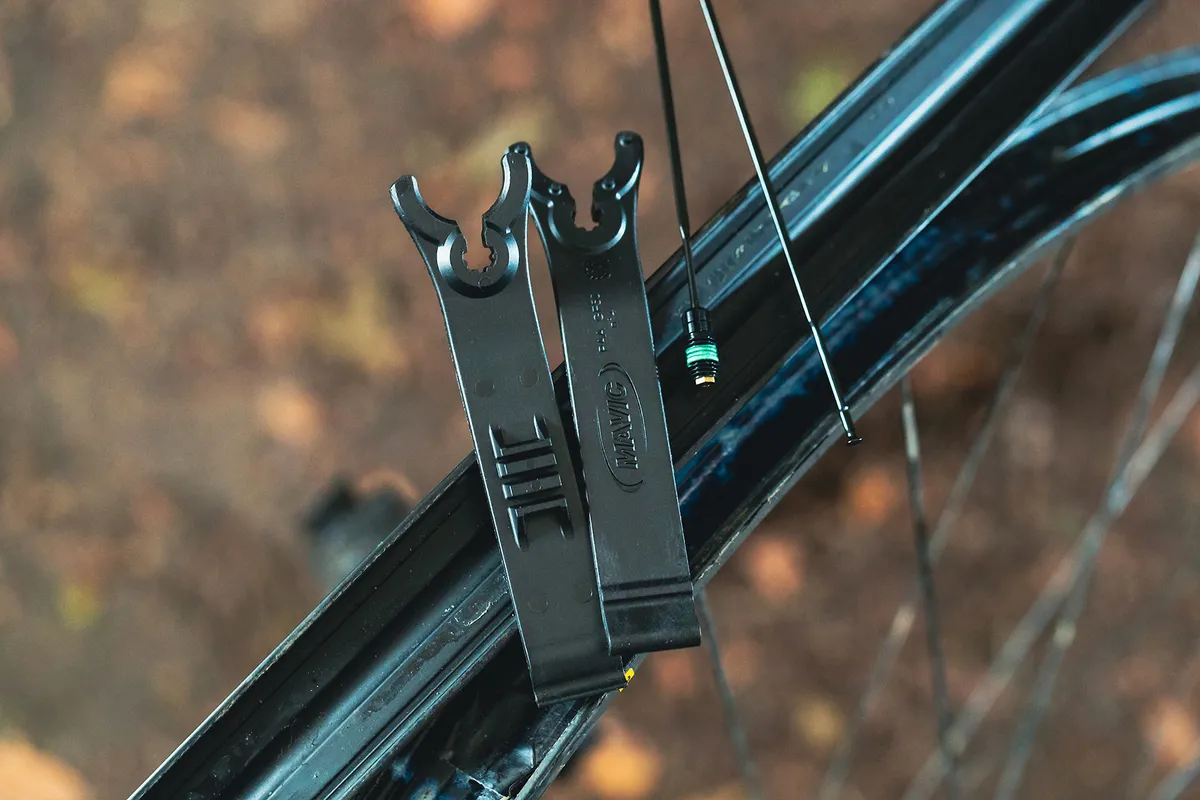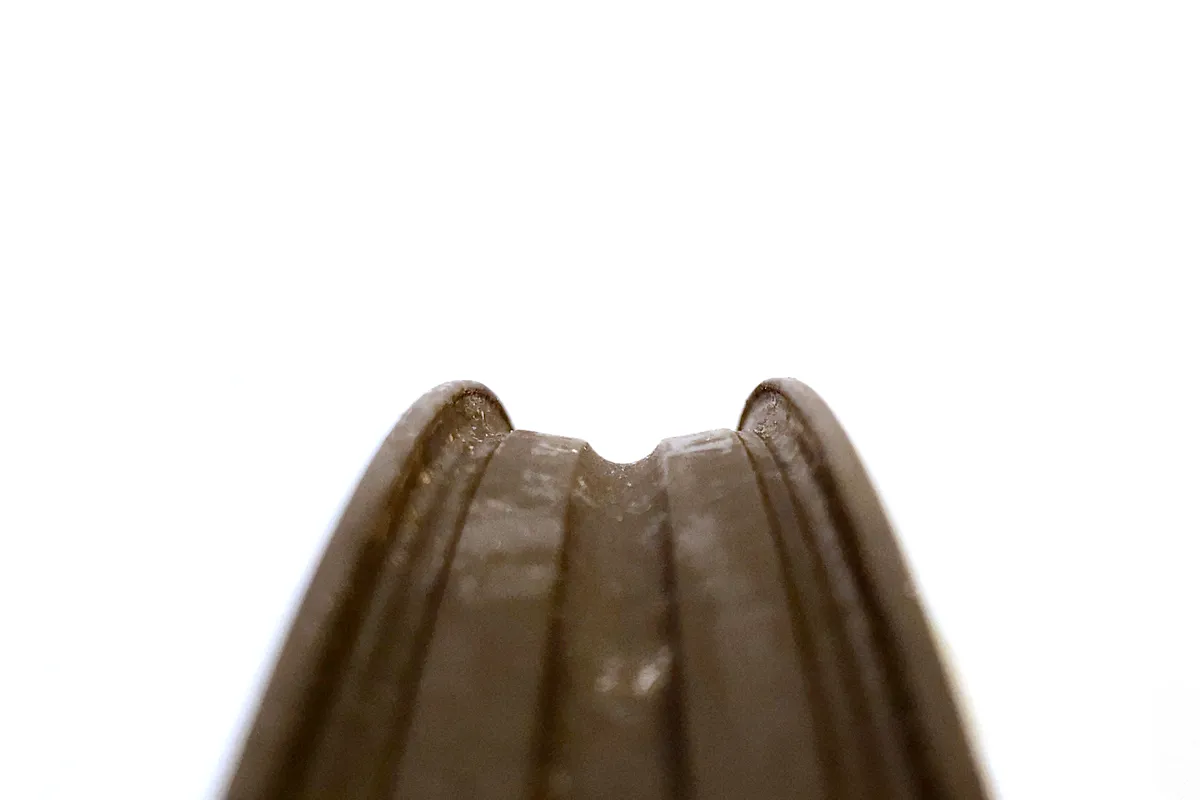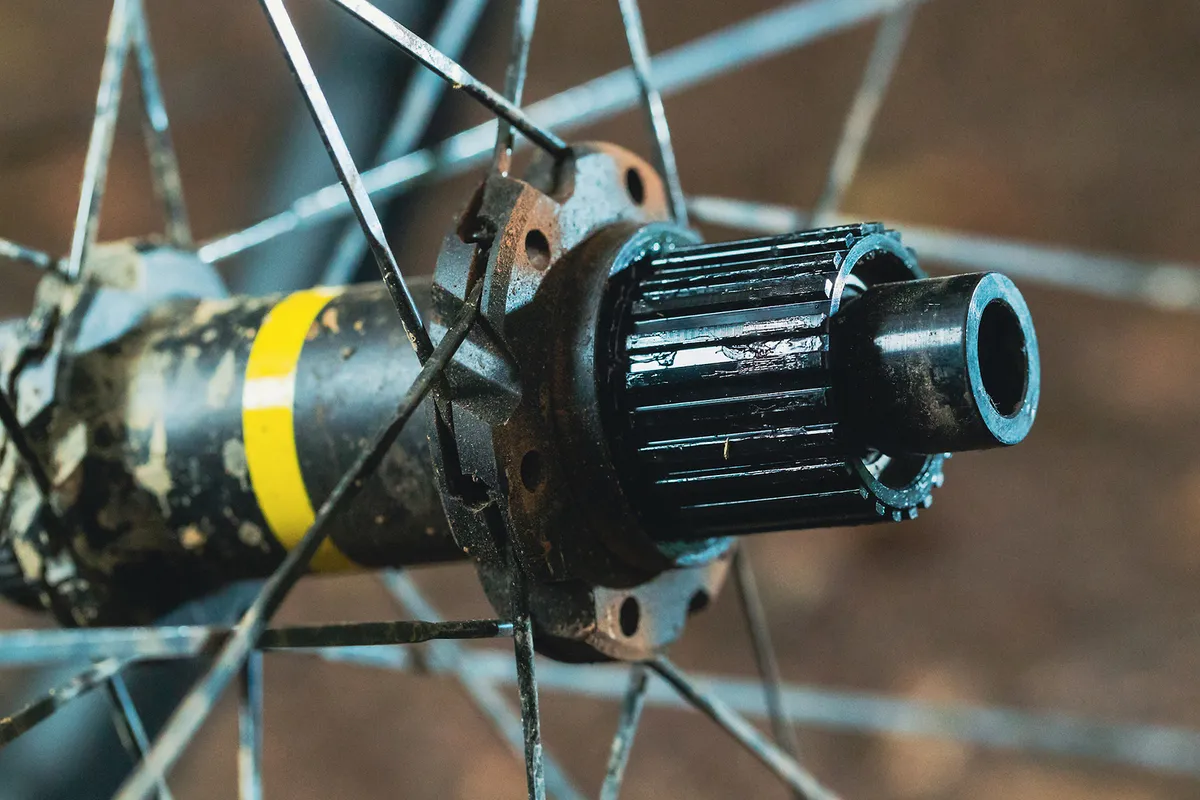One of the best-known brands in bicycle wheels, Mavic has been building hoops for decades, and the Crossmax XL S wheelset is one of its alloy options.
Mavic might have faced tough times behind the scenes recently, but its wheel range is still enviable.
Its distinctive yellow branding is easy to spot, though its signature UST rim design is less visible to the naked eye.
Mavic Crossmax XL S specifications and details
Back when riders were experimenting with rubber tubeless strips or more Heath-Robinson ‘split down the middle’ inner tube approaches to tubeless, Mavic introduced its UST rim bed system.
This system features a non-drilled rim bed, meaning there’s no sticky tape to apply to ensure an airtight rim.
The flipside is that the rim can’t use traditional spoke nipples. Instead, Mavic’s own nipples thread directly into the rim wall. This does mean that if you snap a spoke, you need to use a specific Mavic spoke and nipple, rather than an off-the-shelf one.

Mavic supplies each wheel with two spare spoke and nipple assemblies, but if you lose or have already used them, you’ll have to put a bit more effort into sourcing a replacement. Spokes can be replaced without removing cassettes and rotors, though.
The rim is reinforced in the areas where the nipples thread into the rim bed. The rim is nice and broad but shallow, so access for tyre levers is good.
Getting the tyres over the rim wall is easy enough, but the central well is too narrow to get both sides of the tyre’s bead in, so it can be a bit of a struggle to get tyres on.
Once the tyre is mounted, inflation is easy with just a track pump, and the tyres pop into the rim at relatively low pressures.
However, the wide rim and narrow rim well mean there’s quite a wide step between the inside of the wall and the well.
Tyres lock very securely into the rim wall, but when you’re trying to remove them you have to push the tyre’s bead quite a way before the final release of pressure. It’s then easy to remove the rest of the tyre’s bead from the rim wall.
The hubs have options for both six-bolt and Center Lock rotors, as well as Shimano HG, Shimano Micro Spline and SRAM XD freehubs – my test wheels came with a Center Lock/Micro Spline setup.

The rim has a special coating to give it a little more resistance to scratches, and there’s a customisation option for both the decal colours and rim finish, for an additional cost.
Mavic says it’s committed to ensuring spares are available for all its wheels for at least five years. Alongside the wheels and spare spokes are tools to help get inside the hubs to access the bearings – it’s not as simple as a regular pull-off end cap, so don’t lose the tool.
Mavic Crossmax XL S performance
I found the Crossmax XL S to be one of the noisier pairs of wheels I had on test. While the freehub doesn’t have the loudest clicks, the overall construction of the wheel seemed to create plenty of pops and twangs as I muscled them through corners or battered them over rocks and roots.
This is more of an observation than criticism because in terms of ride feel it seems inconsequential. The Mavics feel like a fairly burly pair of wheels, despite having just 24 spokes per wheel.

I didn’t find they had a soft or vague feel, quite the opposite in fact. They appear to be well built, with a stiff, direct feel.
Through rock gardens, they’re perhaps a little less composed than some of the more compliant wheels on test, but I was still able to hold my lines with confidence. And they do feel great tearing round berms.
The 15-degree engagement angle is wider than most, making them a touch sluggish when you really want snappy reactions out of corners. For the money, I feel it should be better.
Mavic gives a system rating of 150kg, which is generous compared to many other wheels – and impressive given their low overall weight. This means they may well be a good option for heavier riders, or e-MTB use.
Mavic Crossmax XL S bottom line
The XL at the end of the name is a good metaphor for these wheels. Despite a low spoke count, they’re a stiff, snappy wheel that’d suit riders who like an accurate wheel they can trust.
Tyre fitting and removal isn’t as slick as some, and nor is bearing care. But you’ll have no frustrating air leaks from the rim, and if Mavic’s backup is as good as it promises, the hoops should stay running smooth for years.
How we tested
Wheels are a pretty pricey upgrade, so we put 12 trail/enduro sets to the test to find out if there’s an inherent benefit to pricey carbon fibre hoops or alloy is better for hard-hitting rims.
The wheelsets were taken on back-to-back runs down selected tracks in the Welsh woods and at BikePark Wales. They were pummelled over and into rocks and drops, turns and berms, and off-camber roots.
To keep things fair, all our testing was done on the same bikes, both hardtail and full-sus, with the same tyres (thanks Specialized!) at the same pressures.
We tested 29in wheels, but most are offered in 650b versions too. While we predominantly ran 2.6in rubber, we also slung some 2.3in tyres on, and we varied the pressures between test sessions to see what difference we could feel.
Bikes shouldn’t be a pain to live with, so we took into account the ease with which tyres could be fitted and inflated. Likewise, we considered how easy it was to access bearings and swap freehubs, too.
Also on test
Product
| Brand | mavic |
| Price | 790.00 EUR,720.00 GBP |
| Weight | 1879.0000, GRAM (29in) - per wheelset |
Features
| br_rimMaterial | aluminium |
| br_wheelSize | 29in_700c |
| br_brakeTypeSimple | disc |
| br_hubs | Center lock |
| br_spokes | Steel |
| br_freehub | Micro Spline |
| br_rimInternalWidth | 29.5mm |
| Features | Weight (f): 873g Weight (r): 1,006g Engagement angle: 15 degrees |
| br_spokeCountRear | 24 |
| br_spokeCountFront | 24 |
